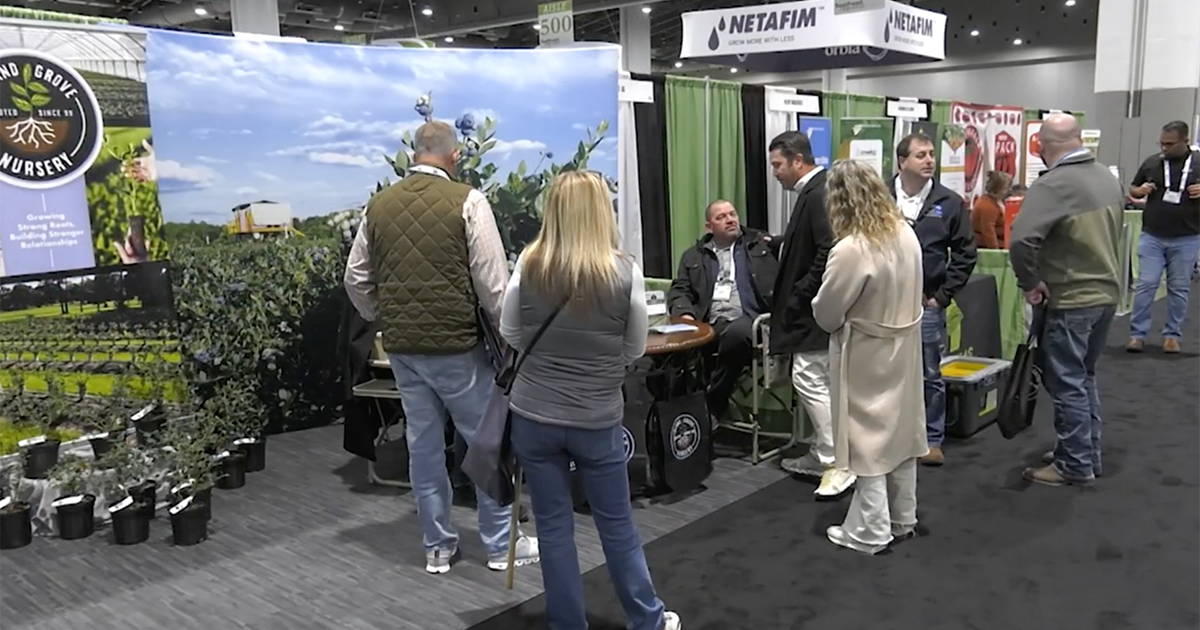Savannah, GA |
Fruit and vegetable growers from all over the Southeast made their way to the annual Southeast Regional Fruit and Vegetable conference – an event that’s meant to equip producers within the industry with all the tools and knowledge that they need to see success back on their operations and remain sustainable for years to come.
“There is an intrinsic value in coming together and visiting with old friends and strengthening those existing relationships; those matter, because in these tough times, those are the people that you can count on. So, it’s great just to bring everybody together in the same room. It’s also great to bring everybody together and get them up to date on rules for compliance, on things like the H-2A labor program, pesticide regulations and other regulations. They face a whole host of agencies that are worried about what’s going on, and we need to make sure that we’re providing them with the correct information to stay on the right side of compliance,” says Chris Butts, Executive Vice President for the Georgia Fruit and Vegetable Growers Association.
Compliance of course a huge topic of concern for growers as they adapt to changing herbicide requirements as the EPA works to develop a framework to ensure growers and producers are applying herbicides in a way that is on target and adheres to the Endangered Species Act: one of which has to do with mitigating surface runoff.
“We will have specific mitigation requirements to prevent the pesticide from leaving the field through runoff, and we will be given certain points on a herbicide label that we must meet. For example, there’s a product out now called Liberty Ultra, it’s the first real example. It has three points for runoff. So, me as a grower, to apply that product I have to achieve three points in mitigation measures on my field to be able to use that product. So we have this new restriction, but we also are providing the mitigation measures, right? It’s not just one or two measures; there’s a bunch of measures to help ensure the product stays on target,” says Stanley Culpepper, Extension Weed Scientist.
Culpepper says they also have specific requirements when it pertains to mitigating particle drift, which again is meant to ensure producers are remaining on-target when using.
“There’s certain measures that we can do as applicators to make sure what goes on target. Just to give you an example, if we’re twenty-four inches above the target versus forty-eight inches above the target, we cut off target or drift movement by fifty percent just from that one measure, and they have developed a credit system where we can reduce buffer. Again, each time we implement one of these measures, that I promise our science based, you’re doing a better job,” says Culpepper.
Culpepper says that growers shouldn’t be worried about this right now as this is the time to become educated, however, he believes growers need to be engaged with this process as much as possible.
“We’ve been working on this for three to five years. We have a lot of growers in the state of Georgia that have monumentally changed where we’re at on the Endangered Species Act today versus two years ago. I am not kidding when I tell you what was proposed two years ago, we wouldn’t have a farm left. We would not have a farm left if it was not for the engagement from our agricultural community, including our farmers. Working together with a little time, we will not only overcome these challenges, we will be better for putting the product on target, keeping it there. Keep in mind, long term, everybody knows what’s happening in our country, but long term, if we cannot make sure these products go exactly where they need to go and they stay there, you’re not going to have them,” says Culpepper.
By: John Holcomb

